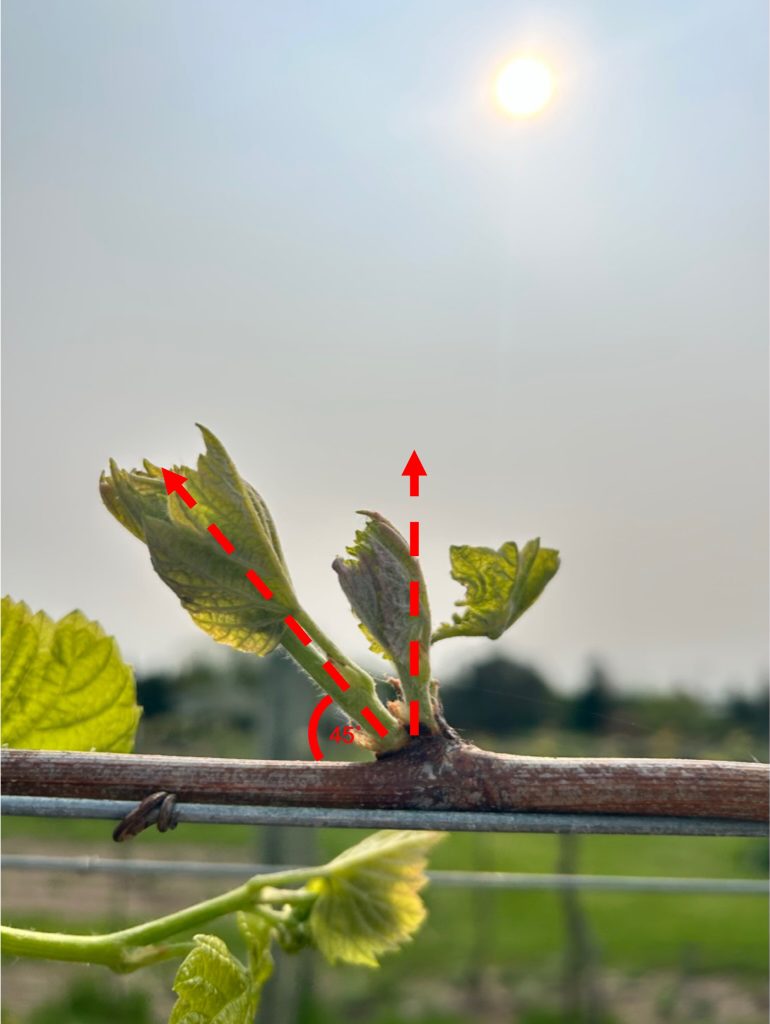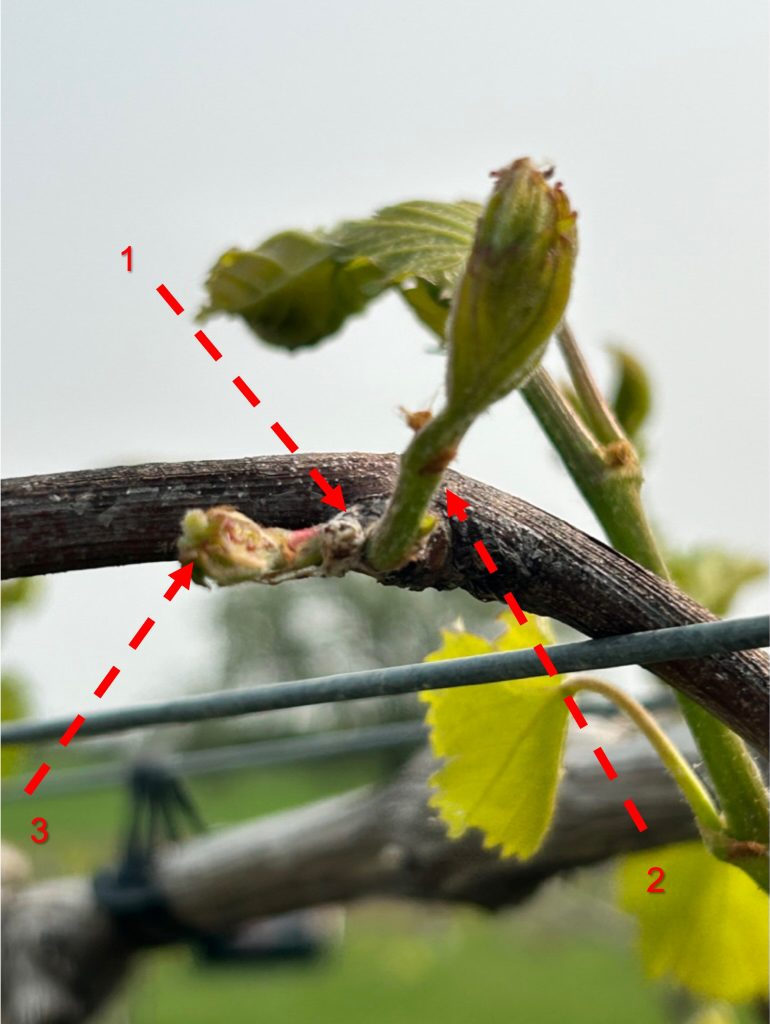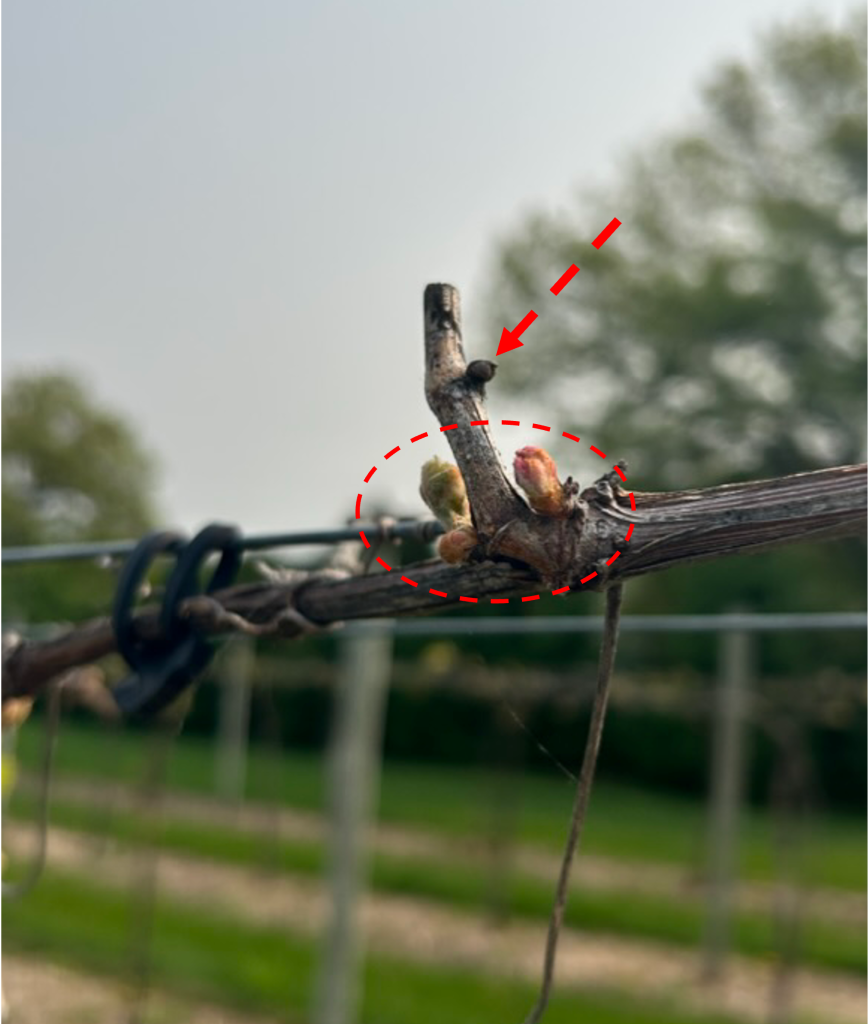Shoots Management in Grapevine for This Season
After the cold weather events we had on the 2nd and 3rd week of April, many grape growers in the southern and central part of the state reported damage to swollen buds. Our team assessed the damage in our research vineyards at West Madison Research Station and also found that many buds were damage in wine and table grapes cultivars. However, as I reported in a previous newsletter article at that time there was not much to be done but to wait and see if secondary buds would push forward. Well, we are now at the point where we can make an overall assessment of the damage and make some decision on how to move forward with this years’ potential crop.
As expected, there is substantial variability in shoot development in vines that experienced cold damage (Picture 1). Part of this variability is that we are seeing shoots coming from primary and secondary buds (Picture 2), as well as tertiary buds (Picture 3). In hybrid grapes, both primary and secondary buds are fruitful and will carry cluster, but tertiary buds will only produce vegetative shoots. In addition, we also have many shoots developing from basal or noncount buds located at the base of spurs (Picture 4). Shoots from noncount buds are fruitful in hybrid cultivars and will carry clusters.




All this variability makes managing this years’ canopy and crop more difficult, and a significant amount of time will have to be devoted to do a through shoot thinning job. Because the cold damage happened early, before bud break, I did not notice a big difference in development between primary and secondary buds. This is good news, because both types of shoots will develop at similar rates, and hopefully by harvest time all clusters will be at a similar ripening stage. This is certainly not the case when we have had late spring frosts that damage primary shoots that have already emerged, and the secondaries are far behind in development after they emerged.
In the next 2 weeks, all shoots will have emerged, and it will be clear how many shoots carrying clusters each vine will have. At this point growers should leave only 2 shoots per spur position and remove all extra shoots. In vineyards with severe cold damage, most shoots will be vegetative and will not carry clusters. In this case, growers should still leave 2 shoots per spur position, which will become the spurs for next season. It is critical to have at least one shoot per spur position so that during next year’s pruning we have enough material to set our new spurs. In addition to the vegetative shoots, there might also be some fruitful noncount basal shoots. In this case growers will have to decide whether is worth keeping those few clusters per vine or if it’s better to remove the inflorescences.
Vineyards with intermediate damage will have a combination of fruitful primary, secondaries, and basal noncount shoots. If there are significant differences in the development of clusters among those shoots, choose the shoots that are further along and remove those that are less developed, this will help have a more consistent fruit ripening across the vineyard. In this case, we also just want to leave only 2 shoots per spur position to avoid excessive shoot density.
This article was posted in Grapes and tagged Amaya Atucha, grape shoots management, Grapes, shoots management.
